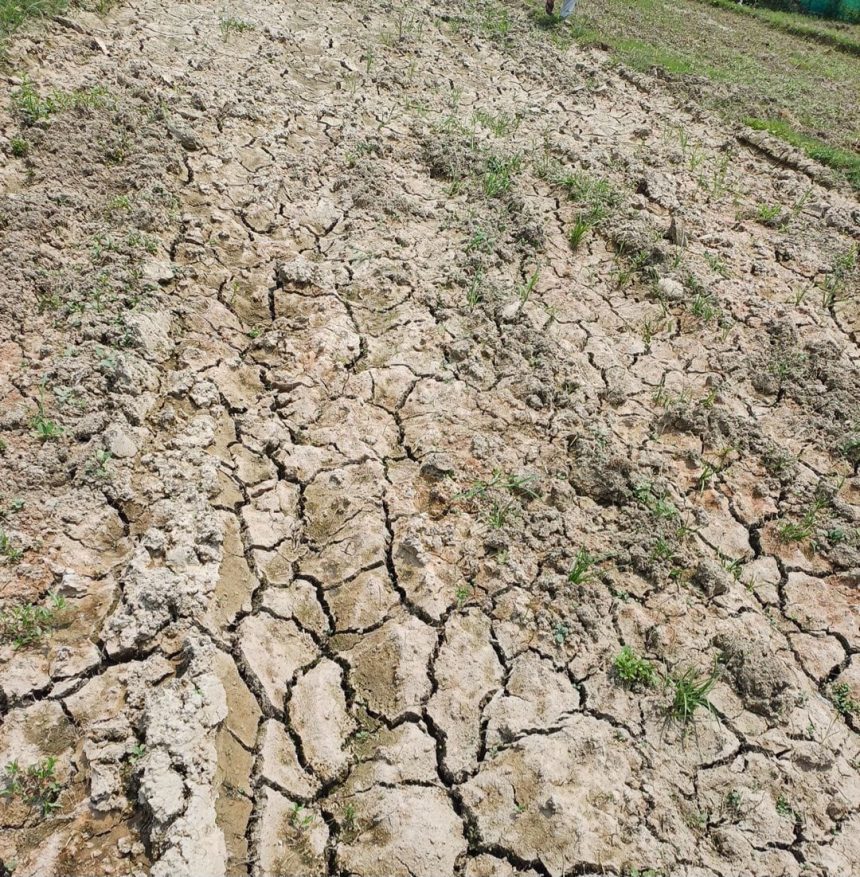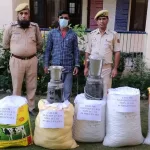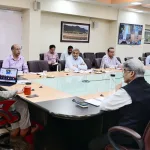Anantnag/Kulgam, Jun 23: A severe irrigation crisis has gripped several villages in Anantnag and Kulgam districts amid the ongoing heatwave in Kashmir, raising concerns among farmers during the peak paddy transplantation season. Officials say areas located at the tail ends of streams, nallahs, and canals are the most affected.
Khursheed Ahmad, a farmer from Kulgam, said he has four kanals of paddy land where he transplanted saplings about ten days ago. “Now, the land has completely dried up,” he said.
“Our area solely cultivates paddy, and no other alternative crop. As farmers, we rely entirely on agriculture for survival,” he said, adding, “If water doesn’t reach these fields, many of us may suffer losses. We are praying to God for rainfall so that our paddy gets a second chance as it needs ample water right after transplantation.”
He said that the irrigation department had done well this year in desilting canals. “But due to the ongoing dry spell and rising temperatures, water levels have dropped drastically,” he added.
Parvaiz Ahmad, Executive Engineer, Irrigation Kulgam, told Rising Kashmir that Kulgam has about 20,000 hectares of command area under irrigation. The worst-hit area currently is the Nandi Canal, which irrigates Qaimoh and Khudwani belts.
“In the last 10 days, temperatures have surged and caused a sharp decline in water levels. This is the peak irrigation season and everyone needs water for their fields, and that has pushed demand up significantly,” he said.
He said that 80 percent of the total command area has been irrigated and paddy has been transplanted, while the remaining 20 percent is pending.
“Water levels are low and demand is high. Tail-end areas are suffering the most. Currently the areas that are feed by Nandi Canal and Bani Laade at its tail-end are badly affected,” he said. “However, Noorabad Canal and the Damhal Hanjipora region are in better condition and supplying water to farmers.”
He added that department officials are regularly patrolling the canals, clearing blockages and ensuring smooth water flow to support farmers.
Meanwhile, Shahnawaz Ahmad Shah, Chief Agriculture Officer (CAO), Anantnag, said villages like Monghal, Chirhama, Ruhu, and others in Anantnag are among those facing serious irrigation shortages.
He said the Agriculture Department has kept a contingency plan ready in case the situation worsens. “We are monitoring the situation. For now, farmers are holding out, hoping for rainfall.”
“We have contingency seeds available under the HADP scheme including maize and various kinds of millets that can be distributed to farmers either free of cost or on subsidized rates if a drought-like situation continues,” CAO Anantnag said.
Shah said that although the agriculture department is prepared for a worst-case scenario, there is still time for paddy transplantation in some areas. “Damage, if any, can only be assessed by early July. We are hopeful the situation may improve by month-end,” he said.








